Magnolia Tree
- March 13, 2024
- 0 comment
Magnolia trees, with their breathtaking blossoms and enchanting fragrance, have captivated humanity for centuries. These majestic trees are renowned for their ornamental value, historical significance, and cultural symbolism. In this comprehensive guide, we delve into the fascinating world of magnolia trees, exploring their various types, growing conditions, uses, symbolism, and much more.

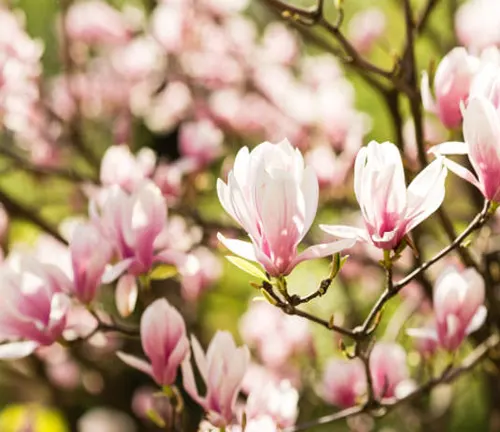
Beyond their aesthetic appeal, magnolia trees serve various practical and cultural purposes. In landscaping, they add charm and elegance to gardens, parks, and estates. Additionally, certain parts of the magnolia plant, such as the bark and flowers, have been used in traditional medicine for their therapeutic properties.
Magnoliaceae family, are renowned for their exquisite beauty and diverse characteristics. Let’s delve into the fascinating world of magnolia trees, exploring their botanical attributes, ecological significance, cultivation methods, and cultural uses.
| Characteristics | Description |
|---|---|
| Scientific Name | Magnolia |
| Common Names | Magnolia, Magnolias |
| Family | Magnoliaceae |
| Native Region | Primarily Asia, with some species originating from North and Central America |
| Plant Type | Deciduous or evergreen trees and shrubs |
| Size | Varies widely depending on the species, ranging from small shrubs to towering trees reaching over 80 feet in height |
| Leaves | Typically large, glossy, and leathery, ranging in shape from oval to lanceolate |
| Flowers | Magnificent, fragrant flowers with varying colors and forms, including cup-shaped, star-shaped, and saucer-shaped blooms |
| Propagation | Primarily through seeds, cuttings, or grafting |
| Drought Tolerance | Generally moderate, though certain species exhibit greater resilience to drought conditions |
| Cultural Uses | Revered in traditional Chinese medicine for their therapeutic properties, and symbolize purity, nobility, and beauty in various cultures |
| Ecological Role | Provide habitat and food for wildlife, support biodiversity, and contribute to soil health and stability |
| Notable Species | Magnolia grandiflora, Magnolia stellata, Magnolia acuminata, Magnolia liliiflora |
| Hardiness Zones | Depending on the species, magnolia trees can thrive in USDA hardiness zones 4 to 10 |
| Growth Rate | Varied, with some species growing slowly while others exhibit rapid growth under favorable conditions |
| Lifespan | Magnolia trees are long-lived, with some species capable of surviving for centuries under optimal growing conditions |
Botanical Beauty of “Magnolia”
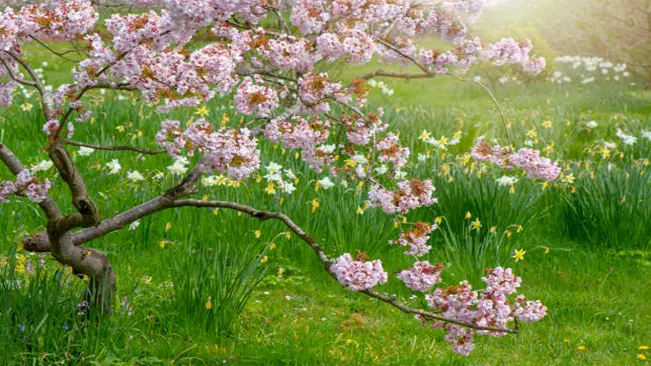
Magnolia trees are renowned for their botanical splendor, boasting lush foliage and magnificent blooms that grace landscapes worldwide. With a wide array of species, magnolias offer a breathtaking display of colors, shapes, and fragrances, captivating the senses and inspiring awe in all who behold them.
Woodland Elegance
In woodland settings, magnolia trees exude an air of elegance and grace. Their branches sway gently in the breeze, casting dappled shadows on the forest floor. Whether standing alone or clustered amidst other trees, magnolias bring a timeless charm to any natural environment.
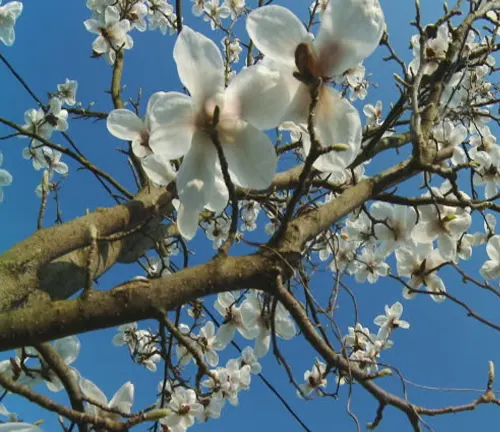

Ecological Importance
Beyond their ornamental value, magnolia trees play a crucial ecological role in forest ecosystems. Their dense foliage provides shelter and nesting sites for birds and small mammals, while their flowers attract pollinators like bees and butterflies. Additionally, magnolia roots help stabilize soil, preventing erosion and promoting soil health.
Cultivation and Conservation
Cultivating magnolia trees requires careful attention to their specific growing needs, including soil type, sunlight exposure, and moisture levels. While some species thrive in moist, well-drained soil in full sun, others prefer partial shade and acidic soil conditions. Conservation efforts are underway to protect endangered magnolia species and preserve their genetic diversity for future generations.
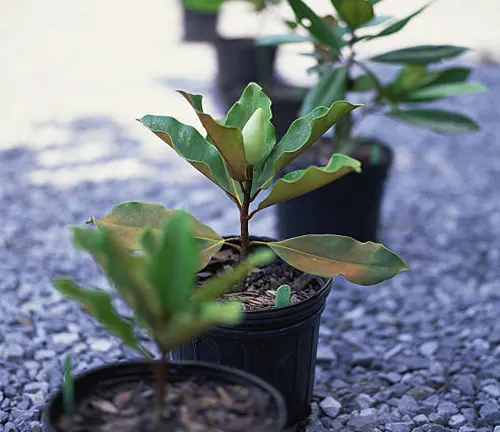
Fragrance
One of the most enchanting features of magnolia trees is their intoxicating fragrance. Whether in bloom or as dried flowers, magnolia scent fills the air with a sweet, citrusy aroma, evoking a sense of nostalgia and tranquility. This fragrance makes magnolias prized additions to gardens and floral arrangements.
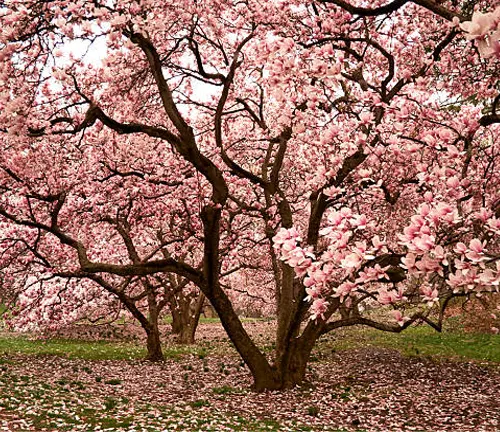
Soil Stabilization
Magnolia roots delve deep into the soil, anchoring the tree firmly and preventing soil erosion. This soil stabilization function is particularly valuable in landscapes prone to erosion, such as riverbanks, hillsides, and coastal areas. By promoting soil stability, magnolia trees contribute to environmental conservation efforts and mitigate land degradation effects.
Common Uses
Magnolia trees have numerous practical applications beyond their beauty. Various parts of the magnolia plant, including the bark, leaves, and flowers, are utilized in traditional medicine for their anti-inflammatory, anti-anxiety, and anti-microbial properties. Additionally, magnolia wood is prized for its strength, durability, and resistance to decay, making it ideal for furniture, cabinetry, and woodworking projects.
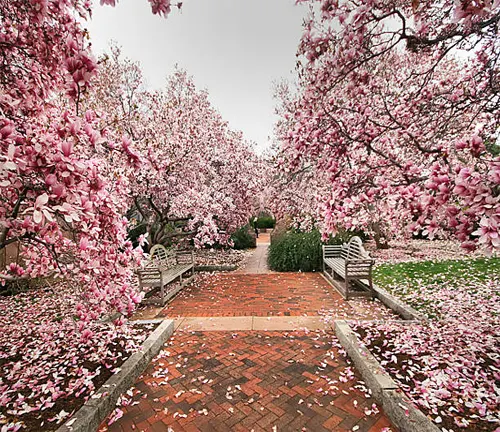
Benefits
The benefits of magnolia trees extend beyond physical attributes to mental and emotional well-being. Studies indicate that spending time in nature, surrounded by trees like magnolias, can reduce stress, enhance mood, and improve overall quality of life. By cultivating magnolia trees in urban and suburban areas, communities can create green spaces that promote health, happiness, and harmony with nature.
Different Species

Magnolia grandiflora
Magnolia grandiflora, also called the Southern magnolia or bull bay, is an evergreen species native to the southeastern United States. It is characterized by its large, glossy leaves and fragrant white flowers, which can grow up to 12 inches in diameter.
Magnolia stellata
Commonly referred to as the star magnolia, is a deciduous species cherished for its star-shaped flowers that blossom in early spring. Originating from Japan, it is widely sought after as an ornamental tree, adorning gardens and landscapes across the globe.
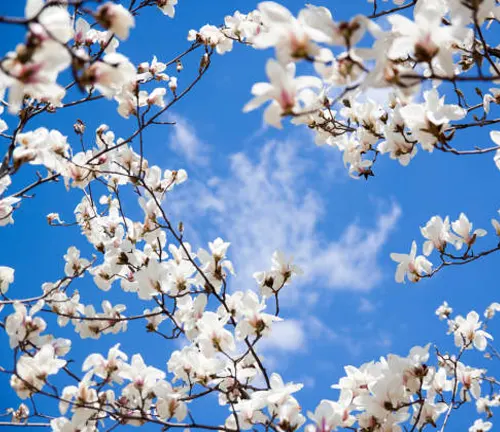

Magnolia acuminate
The cucumber tree or cucumber magnolia, is a deciduous species native to eastern North America. It blooms with fragrant yellow flowers in late spring and is highly prized for both its timber and ornamental attributes.
Magnolia liliiflora
The lily magnolia or Mulan magnolia, is a deciduous species originating from China and Japan. It is famous for its abundant purple, pink, or white flowers, reminiscent of lilies, which bloom in early spring.

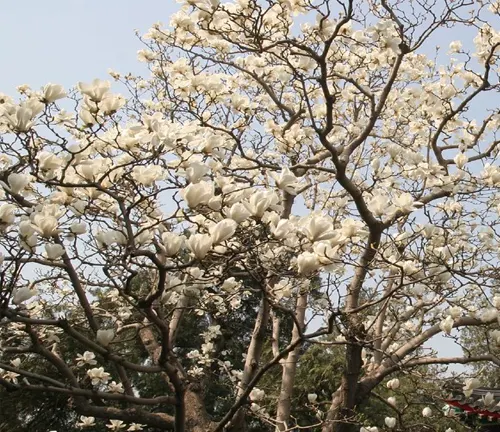
Magnolia denudata
Yulan magnolia or lilytree, is a deciduous species indigenous to China. It showcases sizable, sweet-scented white flowers with a delicate touch of pink at the base, blossoming in late winter or early spring.
Magnolia kobus
It originating from Japan and Korea, is a deciduous species recognized for its graceful white flowers tinged with a subtle pink hue at the base. Blooming in early spring, it is highly valued for its decorative appeal in gardens and landscapes.

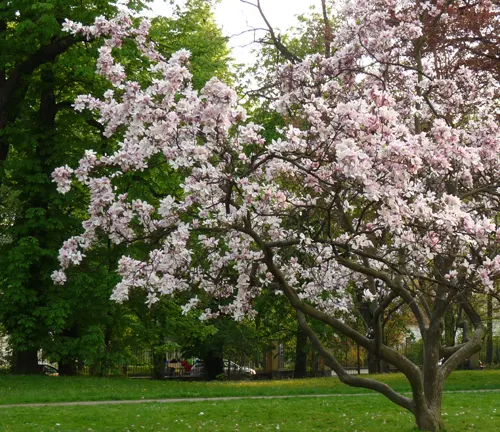
Magnolia soulangeana
The saucer magnolia or tulip magnolia, is a deciduous hybrid species resulting from the crossbreeding of Magnolia denudata and Magnolia liliiflora. It showcases sizable, goblet-shaped flowers in hues of pink, purple, or white, blooming in early spring.
Frequently Asked Questions (FAQs)
- Are magnolia trees difficult to grow?
- While magnolia trees have specific growing requirements, they can thrive with proper care and attention. Choosing the right species for your climate and soil conditions is key to successful cultivation.
- When is the best time to plant a magnolia tree?
- The best time to plant a magnolia tree is in the fall or early spring when the weather is cool and the tree is dormant. This allows the roots to establish themselves before the onset of hot summer temperatures.
- How often do magnolia trees need to be watered?
- Magnolia trees prefer consistently moist soil, especially during the first few years after planting. Water deeply once or twice a week, depending on rainfall and soil drainage, to ensure proper hydration.
- Do magnolia trees attract pests?
- While magnolia trees are relatively pest-resistant, they may occasionally attract pests such as aphids, scale insects, and magnolia scale. Regular inspection and appropriate pest control measures can help mitigate infestations.
- How long does it take for a magnolia tree to bloom?
- The time it takes for a magnolia tree to bloom depends on the species and environmental conditions. Generally, magnolia trees begin flowering within 2 to 5 years after planting, with some species blooming as early as the second year.
- Do magnolia trees require pruning?
- Magnolia trees typically require minimal pruning, mainly to remove dead or damaged branches and shape the tree’s canopy. Pruning should be done in late winter or early spring before new growth begins.
- Can magnolia trees be grown in containers?
- Yes, certain dwarf varieties of magnolia trees can be grown in containers. Choose a large container with adequate drainage holes and use a well-draining potting mix. Container-grown magnolias may require more frequent watering and fertilization than those planted in the ground.
- Do magnolia trees lose their leaves in winter?
- Most deciduous magnolia trees lose their leaves in winter, entering a period of dormancy until spring. However, some evergreen species, such as Magnolia grandiflora, retain their foliage year-round.
- How do I propagate a magnolia tree?
- Magnolia trees can be propagated through seeds, cuttings, or grafting. Seeds should be collected from ripe fruit and sown in a well-draining potting mix. Softwood cuttings taken in early summer or hardwood cuttings taken in late winter can also be used for propagation.
- Are magnolia trees susceptible to diseases?
- While magnolia trees are relatively disease-resistant, they may be prone to fungal diseases such as powdery mildew, leaf spot, and sooty mold. Proper cultural practices, including adequate spacing, air circulation, and sanitation, can help prevent disease outbreaks.





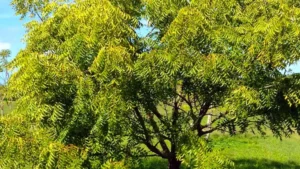






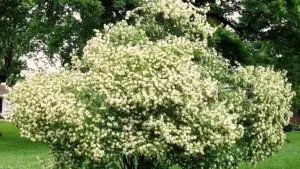

Leave your comment